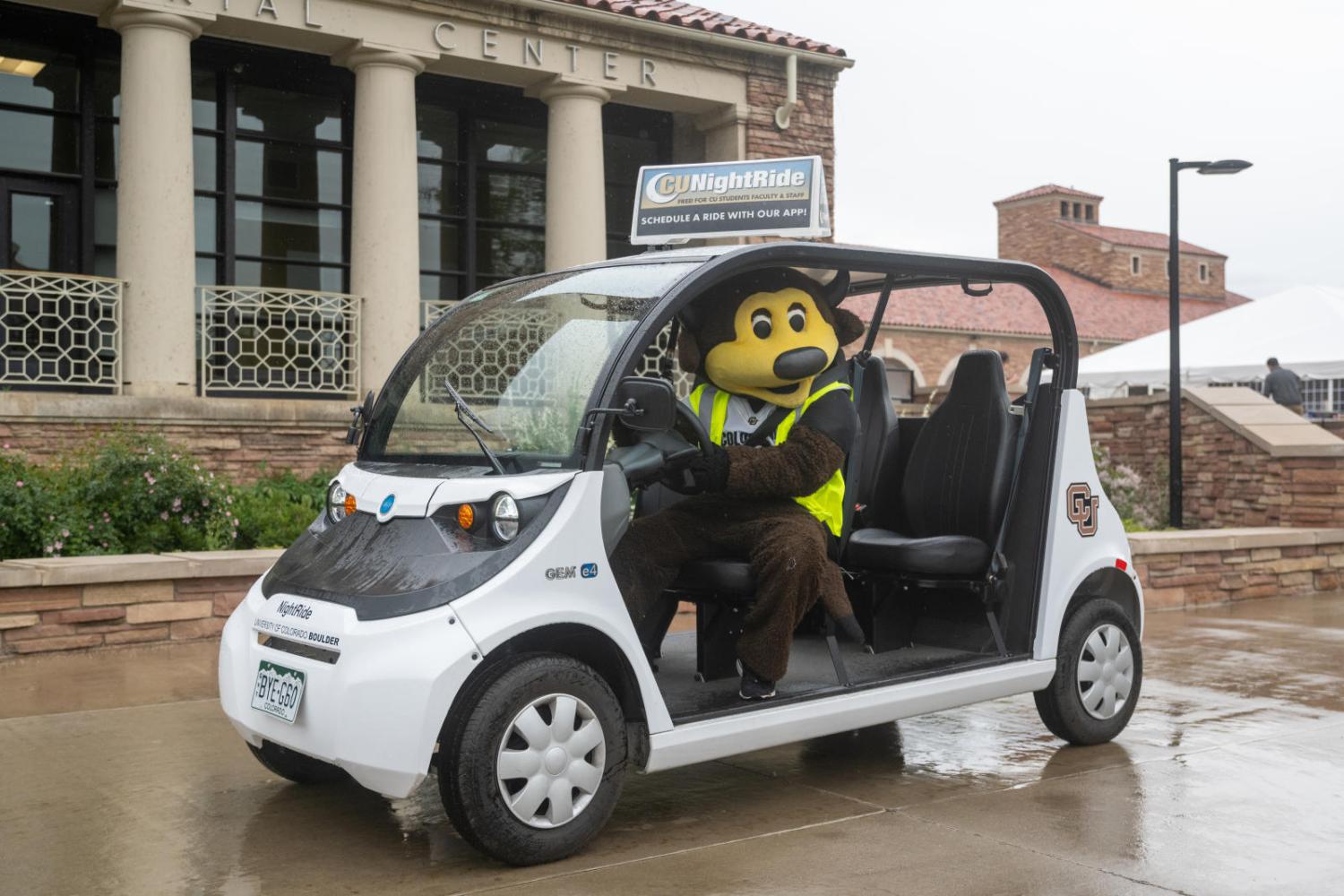The future of electric transportation

Cars and light-duty trucks are responsible for most U.S. greenhouse gas emissions (GHG), and the carbon intensity of fossil fuels, the use of large vehicles with a single passenger for trips and the need for better public transit infrastructure exacerbate the GHG transportation challenge. Some states, including Colorado, have enacted mandatory targets for vehicle electrification. There are benefits and barriers to vehicle electrification, and as a university that values sustainability, understanding the complexity of this solution will help us streamline renewable energy. CU scholars and a local electric vehicle (EV) designer and entrepreneur offer their thoughts on efficient electric transportation below.
Benefits of electric vehicles
Electric vehicles have many benefits, including reducing the need for continued reliance on fossil fuels. To continue drilling for oil, companies need to dig deeper and in more vulnerable areas, making the industry more susceptible to polluting ecosystems with petroleum. Relying on the electrical grid can provide numerous advantages to society. CU Boulder is currently involved in research to make electric transportation sustainable.
One of the main benefits of electric vehicles is that they reduce ozone and carbon dioxide pollution in urban settings. Not only are pedestrians and cyclists in cities forced to constantly breathe in vehicle exhaust fumes, but these fumes also contribute to smog which is detrimental to health and causes visibility issues. With electric vehicles, urban ozone pollution could be a thing of the past.
The University of Colorado Boulder is set to receive $4 million over the next five years from the National Science Foundation (NSF) grant awarded to the Advanced Sustainable Mobility Pathways through Innovative Research, Education and Workforce Development Center (ASPIRE). The center aims to improve health and quality of life by promoting sustainable electrification in the transportation sector through research, education, workforce development, diversity and inclusion. ASPIRE will create a connected education and workforce development system to train a diverse engineering workforce for cross-industry transformations. The center will focus on interdisciplinary thinking and diversity to produce a workforce focused on inclusion and equity. Check out this article to learn more.
Impacts
While vehicle electrification yields environmental benefits, some repercussions remain. Lithium mining has created both human rights and environmental issues, as the mining industry can extract large amounts of lithium in exchange for low wages and in countries with weak labor protections. Lithium mining and battery production has significant environmental impacts including air pollution, water pollution, soil contamination and the destruction of sensitive ecosystems. According to Ivan Penn and Eric Lipton, “Lithium Americas has drawn protests from members of a Native American tribe, ranchers and environmental groups because it is expected to use billions of gallons of precious groundwater, potentially contaminating some of it for 300 years, while leaving behind a giant mound of waste (New York Times, 2022 )." The disposal of used lithium-ion batteries can lead to the release of toxic chemicals into the environment, including heavy metals and toxic acids, which is harmful to humans and the environment. The mineral runoff from the mines causes acid lakes. One silver lining solution is the prospect of lithium-ion battery recycling, which could reduce the exploitation of humans and mines.
The future of efficient EVs
Dan Sturges, an EV company entrepreneur, has sold his GEM vehicles to the University of Colorado Boulder and they are now used for maintenance around campus. Sturges is working on innovation in electric vehicle design for lighter, smaller vehicles to replace standard large cars. This research is crucial as electric vehicle batteries rely on a limited supply of minerals like lithium, and innovations will ease that challenge in vehicle electrification. “Ninety percent of people in Colorado are driving alone to work in a car with five seats; that is a 20 percent load factor,” he said. In other words, all of the unfilled car seats can be seen as wasting energy. Entrepreneurs like Sturges are doing the difficult work of reimagining what the transportation grid could be. With the help of visionary students coming into the required fields, we can ensure the future of more efficient batteries and grids. We need a systems thinking approach that includes all process aspects, from the vehicle to the way roadways are planned.
It is essential for companies involved in the production and disposal of lithium-ion batteries to adopt responsible practices and adhere to strict environmental and labor standards to minimize human rights concerns. This includes implementing sustainable production practices, reducing waste, investing in research and developing more sustainable battery technologies. Renewable energy is an area that is ripe for innovation and careers. There are many pathways to get started in sustainable transportation work, perhaps through urban planning, engineering or data science. Overall, lithium mining must be accepted as an essential environmental net gain due to GHG reductions, but it should be done with adequate controls to minimize mineral runoff from the mines. Therefore, we need active human and environmental health protection through policy measures and technical solutions. All of us should find a role in helping establish a sustainable world where humanity can thrive.


